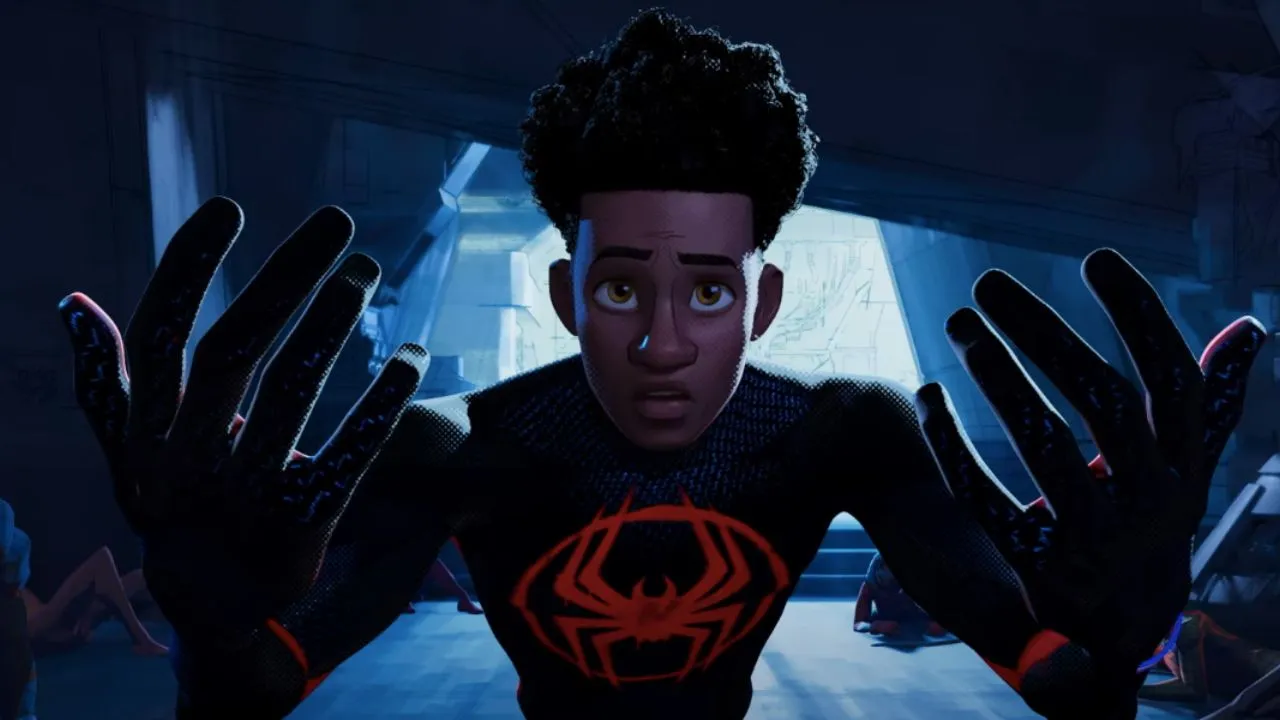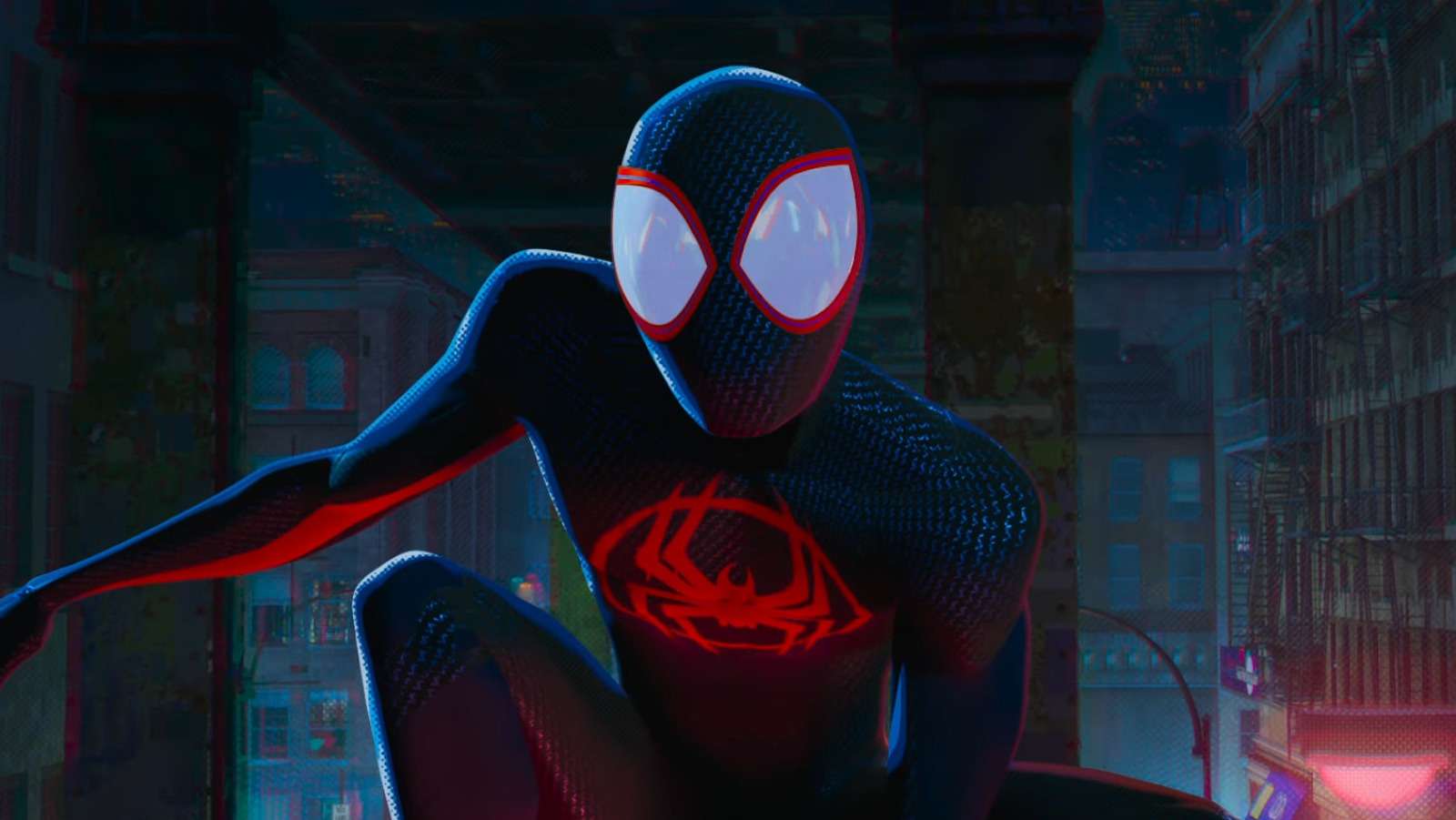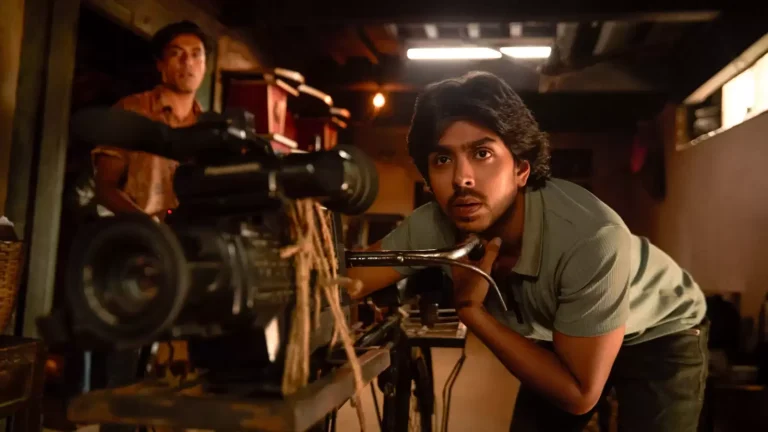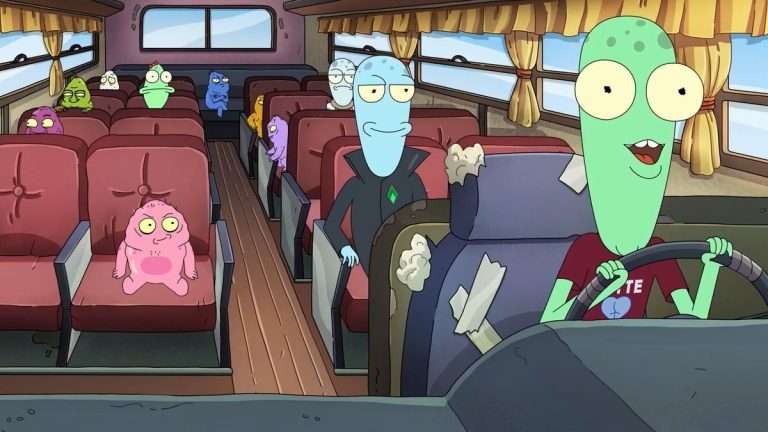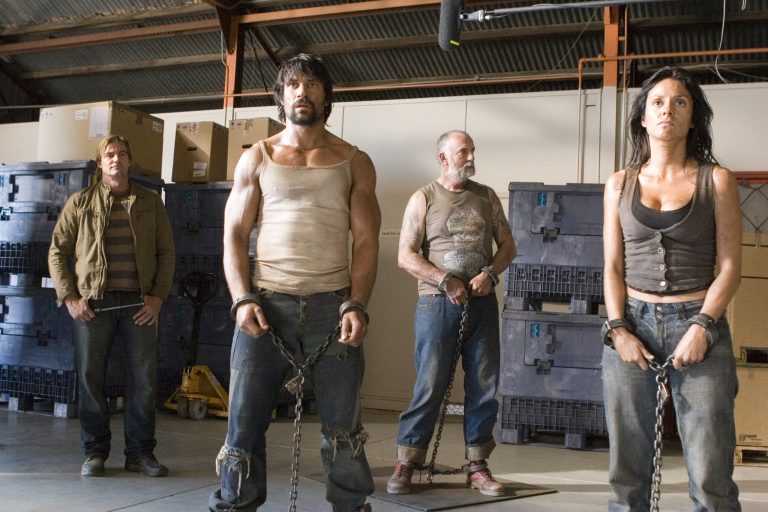Spoilers For Spider-Man: Into the Spider-Verse, Spider-Man: No Way Home, Spider-Man: Across the Spider-Verse, and story-lines from Spider-Man comics will be referenced.
The Genesis of Miles Morales
We need to talk about Donald Glover. In the episode of the sitcom “Community,” titled “Anthropology 101, the character of Troy wearing a Spider-Man T-shirt inspires comic book creator Brian Michael Bendis to consider introducing a black Spider-Man finally. The idea wouldn’t be spawned without added context, considering that the 2008 election of Barack Obama as the first African-American president forced the creators at Marvel Comics to take a long, hard look at one of the cultural icons of their company.
It is useless to get into the weeds of how Miles Morales became a version of Spider-Man, brought to existence after the narrative leading up to the death of the original Spider-Man, Peter Parker, in the “Ultimate Universe” or “Earth-1610” (“Ultimate Imprint” of comics if we look at the Marvel publishing line) in 2011.
The big question arises: what about Spider-Man as a character that can inspire fans of all races to see themselves as part of the character, to identify with it, and to feel represented?
Miles Morales as Spider-Man in Spider-Man: Into the Spider-Verse (2018)
When the late Stan Lee and Steve Ditko created Spider-Man in the pages of Amazing Fantasy #15 and subsequently launched his own title, the perspective was to craft a Superhero who was grounded and relatable. His problems would be tinged with a heavy dose of melodrama and pathos, a battle to maintain both sides of an individual’s life when dealing with a serious amount of responsibility.
Hilariously, if you look at the perspective of the relatability of Spider-Man, novelist Walter Mosely, in an interview with Vulture’s Abraham Josephine Riseman, pointed out how the chief characteristics of Spider-Man already made him “more black.” The fact that Spider-Man as a character was tormented by the majority of the populace of the city meant that the police would usually be after him. His only job was to document the actions of his alter-ego, putting his hand in the proverbial cookie jar and taking pictures of Spider-Man swinging and taking his enemies out of commission. At the same time, the editor of The Daily Bugle wrote incendiary columns against the hero. According to Mosely, It is unsurprising that the black community identified with and related to the wall-crawler’s plight.
Perhaps that is why the invention of Miles Morales in the comics encapsulated the concept of Spider-Man, which creator Stan Lee so eloquently points out in 2018’s Spider-Man: Into the Spider-Verse: Spider-Man could be anyone inside the mask, regardless of the color of their skin. When he first mentioned this axiom on the press tour of Spidey’s first big screen adaptation of 2000’s Spider-Man, it was from an indirect perspective, talking about how a character could almost transcend race. But from the perspective of Miles Morales as a character, there was an opportunity to comment on racial politics, even if that meant race-bending an established character.
One of the primary reasons that race-bending initially worked was because Miles was brought into existence in a world without Peter Parker, and the 2018 movie Spider-Man: Into the Spider-Verse wisely chose that path. The death of “Earth-1610” Spider-Man was a critical juncture in initially pushing Miles to be Spider-Man out of a sense of responsibility, considering he exhibits the same powers.
The movie then wisely charts the growth of Miles as a character as he begins to fill out the shoes and understands the trials and tribulations of being a hero, as well as the various uncertainties and anguish in taking up the mantle of Spider-Man. One of the movie’s clever choices to change is making Jefferson Davis, Miles’ father, a police officer instead of a criminal in the comics while maintaining his uncle Aaron Davis’ profession as “The Prowler.”
While Miles initially doesn’t know about Davis’ secret identity, it nonetheless provides Miles with two different sides of black masculinity. Into the Spider-Verse also never directly dealt with Miles solving or dealing with crimes related to race, but his racial and cultural identity is an integral part of his character, shown via the detailed and gorgeous animation of the neighborhoods of Brooklyn, the graffiti, the style and swagger that Miles generally possesses, and even through his music tastes. The choice of music from artists like Chance the Rapper, Swae Lee, Post Malone, or The Notorious B.I.G. speaks about Miles’ struggle with his identity and pride regarding his skin color. Even style statements like Miles Morales’ costume incorporating a hoodie problematize the concept of biracial kids as “menaces to society” and instead work as a positive affirmation.
Race and Diversity in “Across the Spider-Verse”
Like a true sequel, Spider-Man Across the Spider-Verse takes the thematic threads from the first movie, which had been established eloquently, and builds on them with even more elegance. While the racial politics were subtle in the previous film “Into the Spider-Verse,” they are more pointed here.
Miles’ school, Brooklyn Visions Academy, a high school inspired by the specialized charter high schools in New York City, is a point of pride for his parents. If the comic book origin holds water for Miles, he must have been admitted via a lottery, a plot point in the comics that comes into play in Jason Reynolds’ prose novel of Miles Morales. While that is not touched on in the film, what is quietly pointed out is the implicitly political nature of Miles’ presence in the school.
When Miles’ counselor suggests that Miles write an essay regarding his immigrant status from a proud, financially dire family, Rio and Jefferson politely counter. In fact, Jefferson points out how they basically own their floor in a Brooklyn apartment complex, while Rio reminds her that she is from Puerto Rico, a part of the United States. It feels like a bit of a self-congratulatory move by the writers to acknowledge the presence of a racially diverse character from the United States instead of resorting to traditional Hollywood tropes of portraying them as immigrants and thus financially challenged. It also hammered home one of the unique aspects of Miles’ version of Spider-Man – his family is still alive, unlike Peter Parker, who chooses to be a loner.
The perspective of diversity, though, works far better when the movie chooses to focus on it on a macro scale. It takes the concept of the infinite multiverses. It doubles down on the individualism that comes from diversity, which exists side-by-side with even different species variations of Spider-characters, like a Spider-Cat. Choosing to expand upon the supporting cast with an Indian version of Spider-Man and a British anarchist punk-rock version of Spider-Man (appropriately titled Spider-Punk) also feels like an intentional choice in the exploration of diversity and the specific politics that the characters acknowledge and that concurrently inform their characters without overwhelming their narrative.
Let’s explore the Indian version of Spider-Man. The off-handed jokes are fun perspectives of the regional politics of that universe, a very near approximation of the real world from which it is inspired: the joke about the redundancy of the term “chai-tea,” the agglutination of traffic throughout the city, a museum housing artifacts that the British had stolen from their people. Exploring the updated costume designs of the characters also signifies a cultural exploration through a different iteration of an iconic hero. The golden bangles that doubled as his web-shooters resembled the “damaru,” or power drum, of the deity Shiva, which was supposed to grant him magical powers. And, of course, from the broadly comedic angle of producers Lord and Miller, whose fingerprints are all over the film, we see the onomatopoeia associated with the action sequences typified in “Devanagari” or “Hindi.”
On a similar but smaller scale, Spider-Punk (Hobie Brown) symbolizes the chaotic spirit of the punk movement in the universe he comes from and allows the tendrils of that punk and rebellious nature to feed into the corporatized nature of Spider-society. Hobie’s design in the movie is always overlapping, never stationary, a collage of different art styles and poster designs in the vein of 1960s album covers of the Punk rock movement, a sentiment which is shared by the character and who also works in helping Miles emphasize his individuality when the final conflict arises with Miguel O’Hara (Spider-Man 2099) questioning his actions and the last conflict in the movie.
Canonization of events and the status quo
In general terms, Canon means a series of books or events regarded as sacrosanct or essential. From a historical perspective, the canonization of texts and elevating them to objective or universal knowledge hides the reality that most of this canonized content stems from values and ideologies of an early time and an earlier era of imperialism.
From the perspective of comic books and comic book media as a whole, the longevity of American comics depends on a cyclical perspective of maintaining the status quo to bring in newer readers, such that the essence of these characters isn’t removed. This contrasts sharply with how comic books or comic book movies were introduced to average audiences before the advent of cinematic universes: a choice or random occurrence sparks curiosity or interest, which ultimately induces the viewer to research and explore. This was before the advent of cinematic universes, which adhered to a strict chronology that would be required to be followed to understand the context of events within a movie.
For Spider-Man, the true legacy of the character is guilt. The mantle and the man carrying that mantle (a variation of Peter Parker or any other character) undergo loss as collateral damage while balancing his personal life and the life of the superheroic alter-ego. For Spider-Man, it is the loss of his Uncle Ben that sparks the axiom “With Great Power, there must also be a great responsibility,” caused by Peter’s arrogance at not stopping a robber and fate’s cruel hands as the same robber is responsible for the death of his uncle.
Similarly, the death of Gwen Stacy, Spider-Man’s girlfriend, or the death of George Stacy, Gwen’s father and one of those key mentor figures of Peter Parker, hardens Spider-Man and also emphasizes how, despite so much loss, the man’s cheerful facade belies his internal strength. It represents the character’s strength and relatability as he battles through loss and doesn’t shirk from his duty, even as problems from both sides of balancing his life cause him to break down again and again. It’s the core tenet of storytelling, especially Spider-Man.
The Jon Watts-directed Spider-Man: No Way Home (2021) followed Peter Parker (Tom Holland) trying to solve a multiversal mess by ensuring that villains from alternate universes of the Spider-Men are sent back home to ensure his current universe isn’t destroyed. The Marvel Cinematic Universe’s (MCU) depiction of Spider-Man never actively acknowledged the death of Uncle Ben or whether his absence was of life-changing significance to Peter.
In the first film, Spider-Man Homecoming, Tony Stark (Robert Downey Jr.) dutifully fills the role of the mentor, whose death in Avengers Endgame (2019) drives Peter’s emotional arc throughout Spider-Man Far From Home (2019), even beckoning him towards a mentor-like figure in Mysterio (Jake Gyllenhall). Mysterio’s subsequent reveal as the eponymous trickster drives much of the emotional arc of Peter throughout the run, finally culminating in the reveal of his identity and his asking for help from Doctor Strange (Benedict Cumberbatch), leading to the inciting incident of Spider-Man: No Way Home.
In No Way Home, the narrative finally introduces a curveball. We witness the Green Goblin (Willem Dafoe) murdering Aunt May (Marisa Tomei), which echoes the death of Uncle Ben from the comics, along with the utterance of the famous axiom. Even as Peter drowns in the sorrow of the loss of his only family member, his multiverse counterparts, played by Tobey Maguire and Andrew Garfield, acknowledge that the death of Aunt May in this universe might not have been for nothing because somehow that death elevated the character and made him into the “one true Spider-Man.”
The overt acknowledgment of the death of Uncle Ben, as echoed in the development of Spider-Man throughout the various iterations, finally crystallizes into the “canon event.” From a referential perspective, it is simple and clever in an ode to remaining respectful of the character’s origins. It also becomes a constraint and, by the effect of the writing of “Across the Spider-Verse,” a moral dilemma. We learn that one of the critical objectives of the Spider-Society is to ensure that canon events are maintained. Failure to comply with or deviate from these canon events could cause the annihilation and obliteration of the universe itself.
The final conflict arises with the canon event ASM-90, as referred to by Miguel O’Hara. ASM-90 refers to Amazing Spider-Man Issue #90, where George Stacy dies after saving a child from a piece of rubble during an impending crisis. This event then balloons into a canon event, part of the lexicon of the history of Spider-Man, which documents his growing pains. For Miles, ASM-90 is especially important because it would lead to his father’s death, police Captain Jefferson Davis. That canon event was also supposed to happen in the world of Spider-Man India before the presence of Miles and Gwen averted it.
It’s the principle of the occurrence of the event that’s important, not the actual specifics of the events, which is enough to poke holes in Miguel’s logic and partly what the movie is also driving at as we get ready for the eventual sequel in “Beyond the Spider-Verse.” As described above, in the film “No Way Home,” the character of Uncle Ben is replaced by Aunt May, but the essence remains the same. Similarly, for Miles, the death of Uncle Aaron, or the Prowler, takes the place of the proverbial “death of Uncle Ben” canon event. Or as “Across the Spider-Verse” finally shows, Gwen’s father resigns from the police force in her universe, effectively changing the narrative considering she would also have to undergo “ASM-90”.
But the movie argues that the universality of the character of Spider-Man, or the person behind the mask, should also invite change in storytelling. After all, the canon events could very much be the creators of Spider-Verse acknowledging the constraints of writing serialized comic book fiction for decades, with these events slowly transforming from features to crutches. Miles’ insistence on opposing it is both a testament to the confidence of youth in attaining everything they possibly can and a reassertion of his individualism.
The final action set-piece in the bullet train at Nueva York culminates with Miguel body-slamming Miles and revealing to him that the spider who bit him wasn’t supposed to be in his universe in the first place, and thus Miles is an anomaly. It’s not out of the norm for characters other than Peter Parker to carry variations of the “Spider-Man” mantle, be it Gwen Stacy (Spider-Woman of Earth-65), Jessica Drew (Spider-Woman), Spider-Punk (Hobie Brown), or Spider-Byte (Margo Kess). Still, he is not the Spider-Man that Earth-42 was supposed to have. If viewed with a discerning eye, that universe’s Spider-Man was supposed to be Peter Parker.
This conflict is the creators directly pointing at the section of fandom that still exists and still believes in the anti-Miles sentiment of the redundancy of the existence of a character. But through this direct line of questioning, as voiced by Miguel O’Hara (which is in itself a dubious choice to become a mouthpiece for that section of fandom), the creators are encouraging audiences and, hopefully, future storytellers to challenge the canonicity of “canon events,” and whether the identity of Spider-Man should be limited to these constraints but encouraged to be more fluid and more open.
Infinite multiverses inherently mean endless options, and as Miles states, with the hint of the confidence that we have seen and known Miles to always possess, “I’mma do my own thing.” It signifies a challenge to the status quo, a rebellion to break through. Somehow within the tenet of comic book storytelling, it means to break free from the cyclical nature of comic books and commit to true linear storytelling, focusing on legacy, succession, and a commentary on the mantle and the iconography of the mantle.
Because Stan Lee was right, anyone can be Spider-Man. Anyone can be beneath the mask. The strength of Spider-Man is in combating the human condition of personal conflicts and tragedy, along with the superhuman disputes that come from the heightened nature of storytelling, and how, at the end of the day, the character still stays grounded, relatable, and still trying to pay the bills or maintain a work-life balance with their partner. Spider-Man: Across the Spider-Verse proves that it is possible for good storytellers to finally break free of the status quo and chart out on their own with their ideas of identity and representation of Spider-Man. The ethos of Spider-Man should be maintained, and the difference between “canon events” and ethos should be realized.

